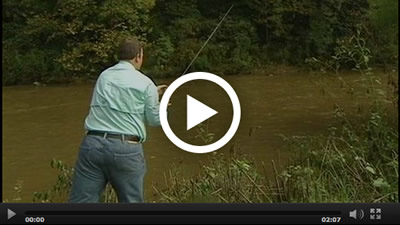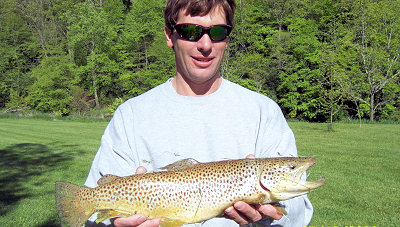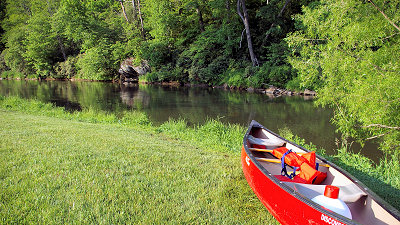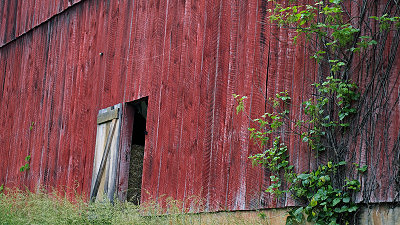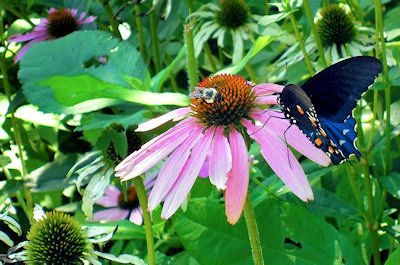ACTIVITIES
 Our bed and breakfast overlooks the North Fork of the ironically named New River, the oldest in North America, in the Blue Ridge Mountains of North Carolina.
Our bed and breakfast overlooks the North Fork of the ironically named New River, the oldest in North America, in the Blue Ridge Mountains of North Carolina.
At River House, you set your own pace. There is a mile of riverfront for strolling, wading and fishing. There are walking trails that wind throughout our 170 acres.
Or maybe you'd rather relax in a rocker on the front porch, glass in hand, watching the river and the giant blue heron who claims it as home. One of the most popular things to do here is absolutely nothing!
Despite its name, the New River is one of the oldest rivers in the world, second in age only to the Nile River and thus the oldest in North America. It was dedicated as a National Scenic River in 1976. On July 30, 1998, President Clinton came to northwestern North Carolina in July to designate the New River an American Heritage River, an initiative born at a conference here at River House.
River House has six kayaks plus a couple of canoes and tubes of its own, and we’d be delighted to drive you upstream and let you float back to the Inn (ask us about rates for that as well as box lunches). Take a two hour paddle or float down the river.
Fishing in the North Carolina Mountains: Choose your spot from a mile of the New River that runs alongside our farm. The section of the New River adjacent to River House has been restocked with another 1,800 rainbow and brown trout! Small mouth bass and other fish are also numerous. The popular Helton Creek, a delayed-harvest trout stream, flows into the New River about 1/2 mile downstream.
It's catch and release. Here are some fishing tips:
- Use barbless hooks. If you use a net, use one made of rubber. It is less harmful to fish scales, gills and eyes. Only net your fish if it is the only way to control it.
- Wet your hands when handling fish. Dry hands and gloves will remove its protective mucous (slime) coating and scales. These protective layers help prevent infection by waterborne disease. Do not beach a fish or let it flop around the deck of the boat.
- Try not to remove the fish from the water. If you must, be quick and gentle, do not squeeze the fish. Needle nose pliers, hemostats, de-hookers etc., will speed up the removal of a deep set hook.
- To revive the fish, hold it under the belly and by the tail, keep it in an upright position underwater, do not move the fish back and forth (this is also a good time to get a measurement and take a photo). If you are fishing in a river or stream, hold the fish facing the current. Be patient and give the fish as much time as it needs to recover and swim away on its own.

